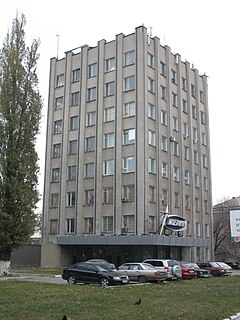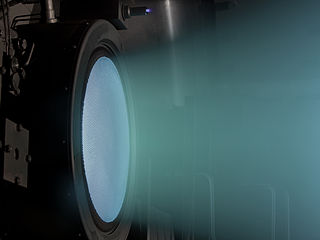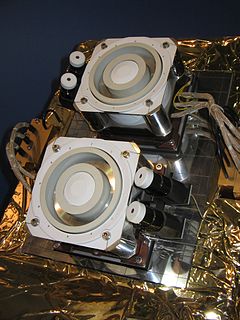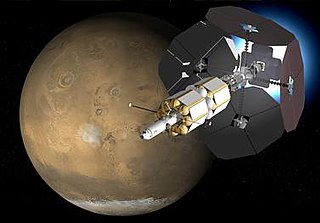 W
WAn ion thruster or ion drive is a form of electric propulsion used for spacecraft propulsion. It creates thrust by accelerating ions using electricity.
 W
WChemical Automatics Design Bureau (CADB), also KB Khimavtomatika, is a Russian design bureau founded by the NKAP in 1941 and led by Semyon Kosberg until his death in 1965. Its origin dates back to a 1940 Moscow carburetor factory, evacuated to Berdsk in 1941, and then relocated to Voronezh city in 1945, where it now operates. Originally designated OKB-296 and tasked to develop fuel equipment for aviation engines, it was redesignated OKB-154 in 1946.
 W
WDirect Fusion Drive (DFD) is a conceptual low radioactivity, nuclear-fusion rocket engine designed to produce both thrust and electric power for interplanetary spacecraft. The concept is based on the Princeton field-reversed configuration reactor invented in 2002 by Samuel A. Cohen, and is being modeled and experimentally tested at Princeton Plasma Physics Laboratory, a US Department of Energy facility, and modeled and evaluated by Princeton Satellite Systems. As of 2018, the concept has moved on to Phase II to further advance the design.
 W
WThe gridded ion thruster is a common design for ion thrusters, a highly efficient low-thrust spacecraft propulsion running on electrical power. These designs use high-voltage grid electrodes to accelerate ions with electrostatic forces.
 W
WIn spacecraft propulsion, a Hall-effect thruster (HET) is a type of ion thruster in which the propellant is accelerated by an electric field. Hall-effect thrusters use a magnetic field to limit the electrons' axial motion and then use them to ionize propellant, efficiently accelerate the ions to produce thrust, and neutralize the ions in the plume. Hall-effect thrusters are sometimes referred to as Hall thrusters or Hall-current thrusters. The Hall-effect thruster is classed as a moderate specific impulse space propulsion technology and has benefited from considerable theoretical and experimental research since the 1960s.
 W
WHEMPT 3050 is a satellite station-keeping Ion thruster, currently selected for the use on German Heinrich Hertz satellite. It's designed to be used for two roles: orbit-rising and station-keeping. To date it's been demonstrated to operate over 9000 hours.
 W
WHigh Power Electric Propulsion (HiPEP) is a variation of ion thruster for use in nuclear electric propulsion applications. It was ground-tested in 2003 by NASA and was intended for use on the Jupiter Icy Moons Orbiter, which was canceled in 2005.
 W
WThe NASA Solar Technology Application Readiness (NSTAR) is a type of spacecraft ion thruster called electrostatic ion thruster. It is a highly efficient low-thrust spacecraft propulsion running on electrical power generated by solar arrays. It uses high-voltage electrodes to accelerate ions with electrostatic forces.
 W
WThe NASA Evolutionary Xenon Thruster (NEXT) project at Glenn Research Center is an ion thruster about three times as powerful as the NSTAR used on Dawn and Deep Space 1 spacecraft.
 W
WPPS-1350 is a Hall-effect thruster, a kind of ion propulsion system for spacecraft. It was used in the SMART-1 mission to the moon and two geostationary satellites: Inmarsat-4A F4 and Hispasat AG1.
 W
WA pulsed inductive thruster (PIT) is a form of ion thruster, used in spacecraft propulsion. It is a plasma propulsion engine using perpendicular electric and magnetic fields to accelerate a propellant with no electrode.
 W
WSPT-100 is a Hall-effect ion thruster, part of the SPT-family of thrusters. SPT stands for Stationary Plasma Thruster. It creates a stream of electrically charged xenon ions accelerated by an electric field and confined by a magnetic field.
 W
WThe Variable Specific Impulse Magnetoplasma Rocket (VASIMR) is an electrothermal thruster under development for possible use in spacecraft propulsion. It uses radio waves to ionize and heat an inert propellant, forming a plasma, then a magnetic field to confine and accelerate the expanding plasma, generating thrust. It is a plasma propulsion engine, one of several types of spacecraft electric propulsion systems.